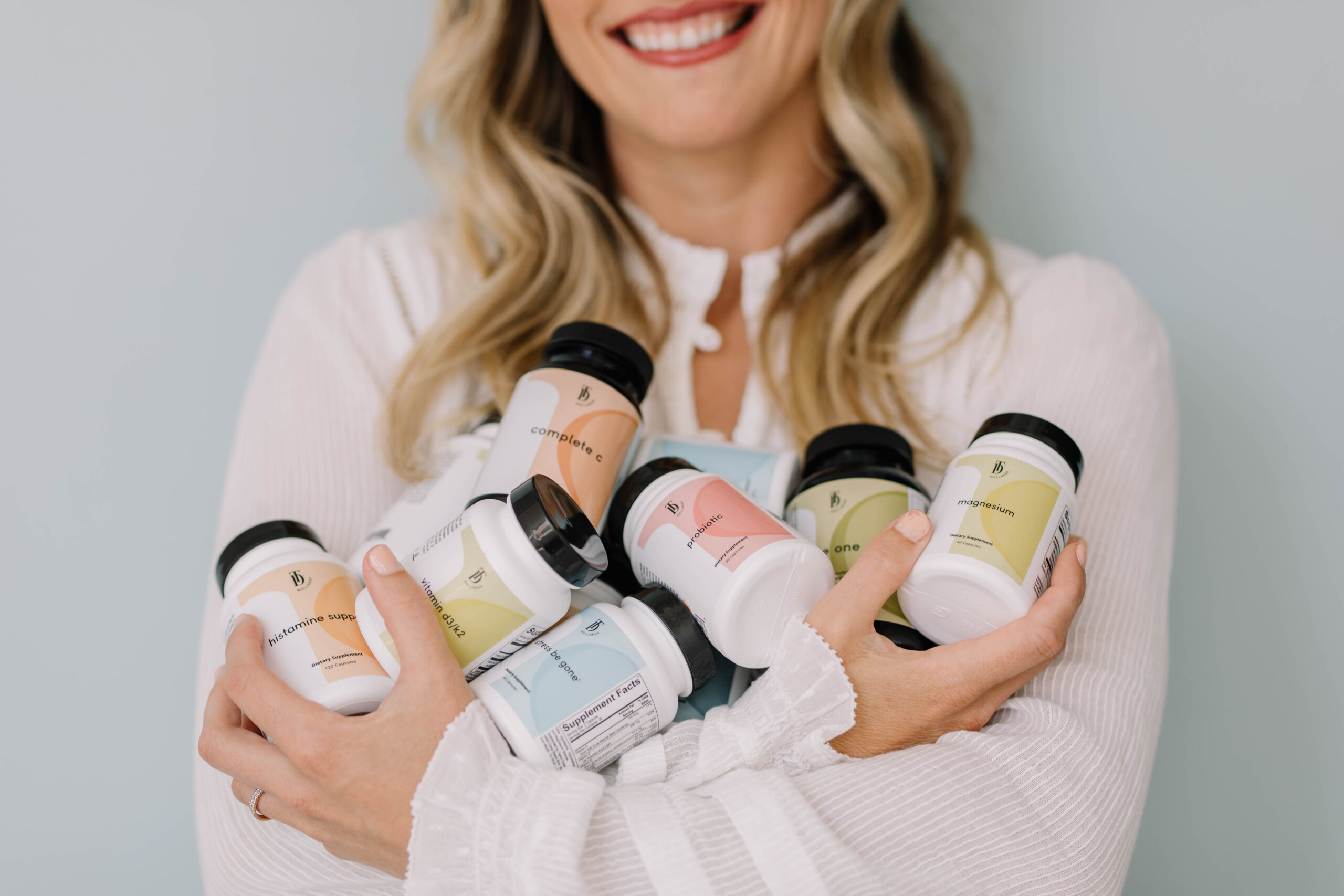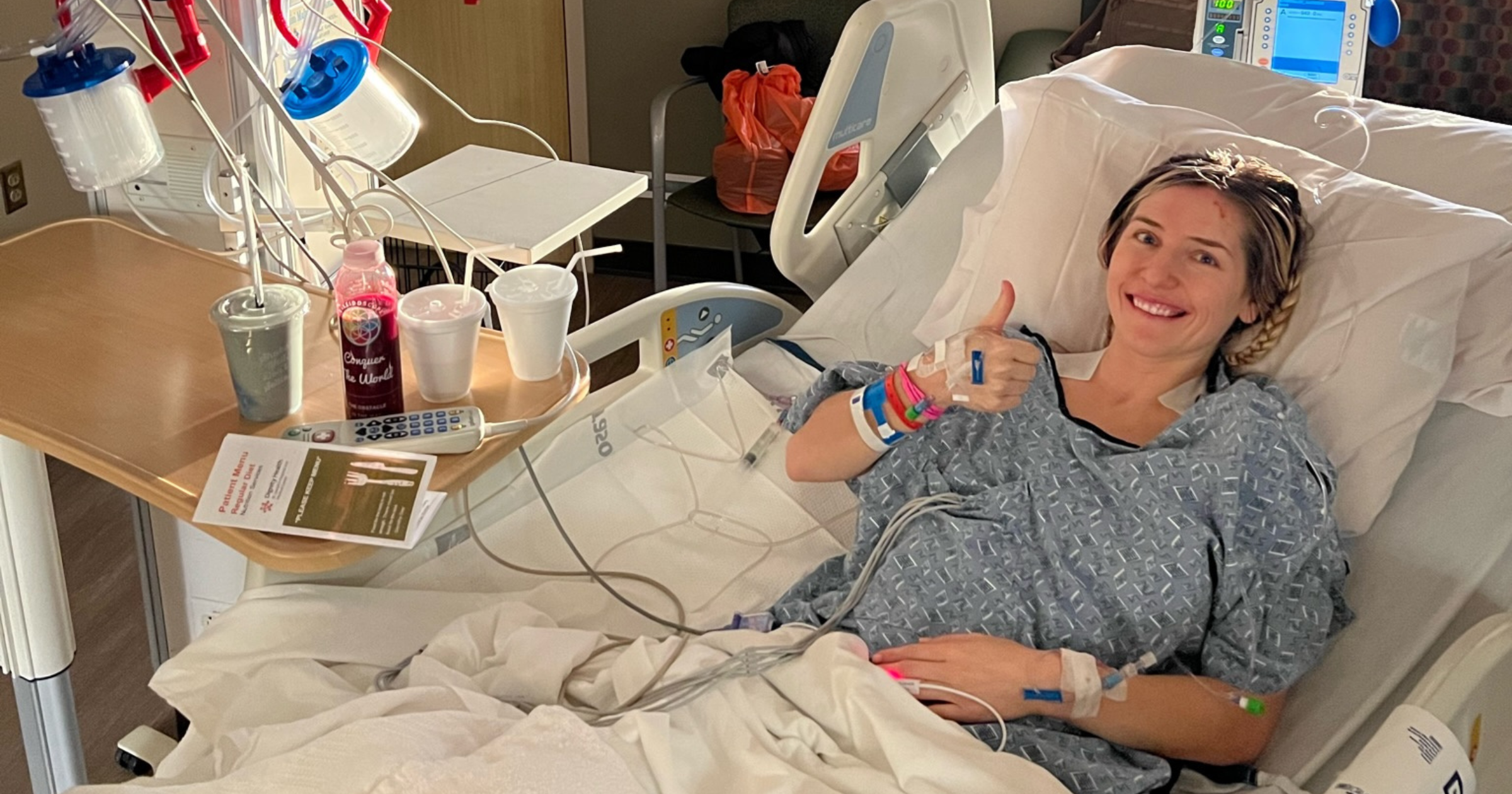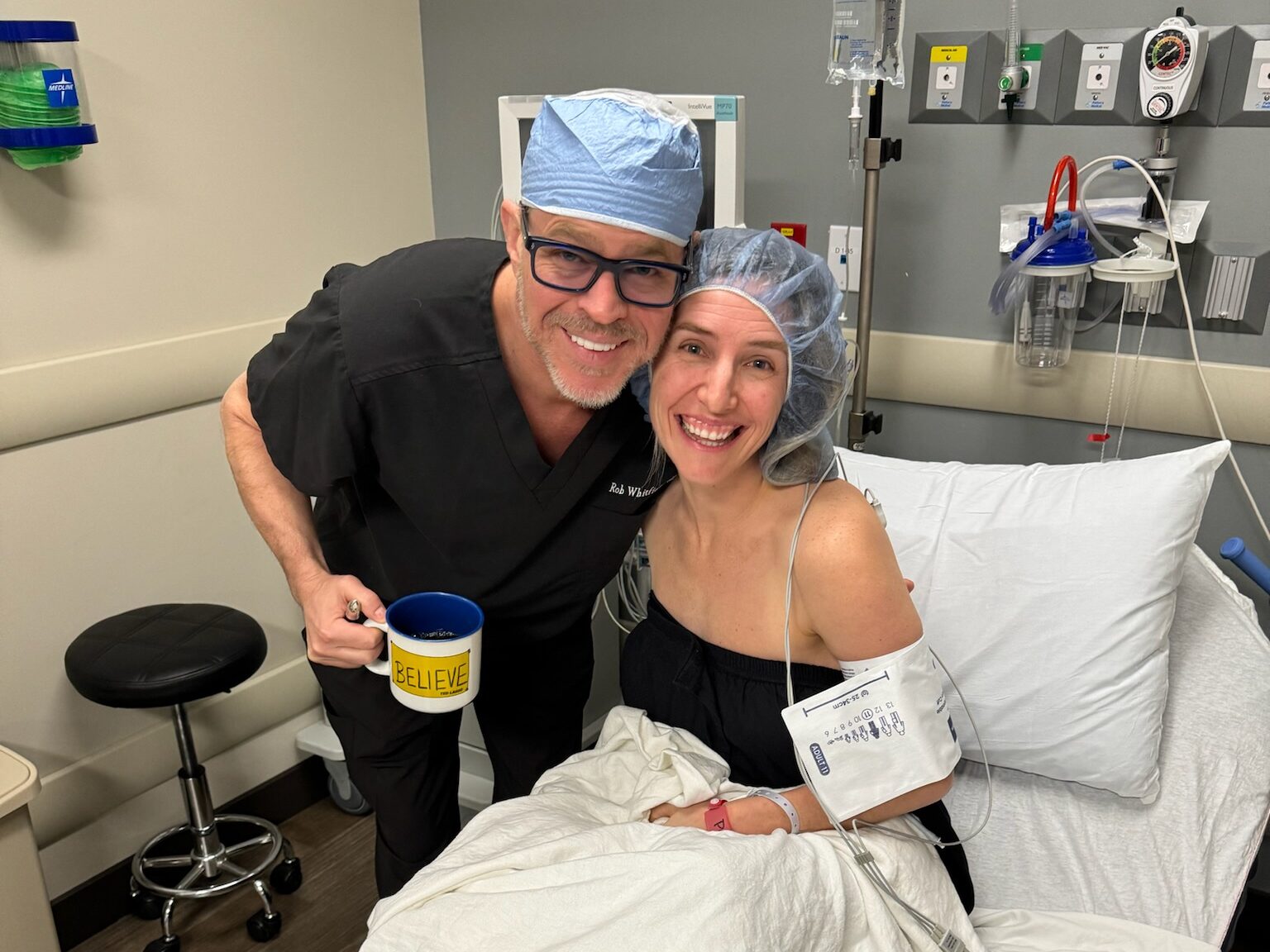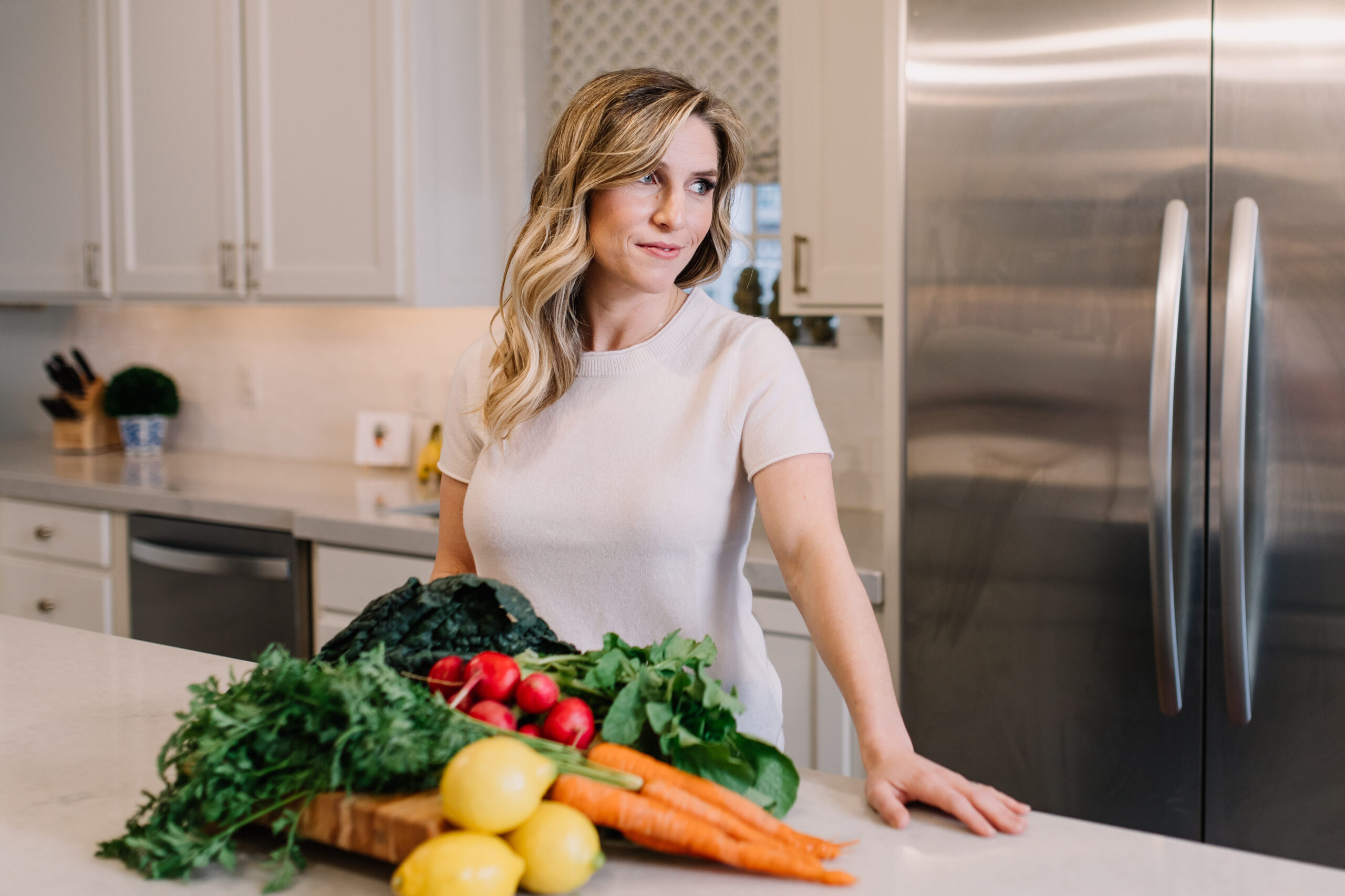How To Replenish Good Gut Bacteria After Antibiotics

Want to learn how to replenish good bacteria after antibiotics? You’re in the right place!
My friends may call me their “crunchy mom” friend, who lives on organic foods, hits the sauna in any free time, and who is ALL about all-natural births, BUT that doesn’t mean I don’t believe in conventional medicine.
There is an absolute time and place for conventional medicine, including antibiotics. They can be lifesaving after all! HOWEVER, I do believe they are overprescribed and you’ll want to avoid them as much as possible. Antibiotics should be seen as a last resort option instead of the first course of action for certain conditions.
Antibiotics Damage Your Gut
Antibiotics wreak havoc on your gut microbiome. While it wipes out all the harmful bugs that are causing you infections and issues, antibiotics wipe out all the beneficial bacteria as well. NOT GOOD, my friend!
You can check out my other blog, Are Antibiotics Causing More Harm Than Good? to learn more about the downfalls of antibiotics.
Gut Health After Antibiotics
Let’s say you do need to take antibiotics, then please, by all means, do so! Just know that after taking antibiotics, your gut health may not be the prettiest.
But there are things you can do after taking antibiotics to REPLENISH your good gut bacteria to offset the negative impacts.
Restoring gut flora after antibiotics doesn’t have to be intimidating or a foreign language! Today, I’m giving you a few tips to live by while recovering your gut flora from antibiotics.
How To Replenish Good Gut Bacteria After Antibiotics
– Varied Diet (Without the Sugars!)
The more organic whole foods you incorporate into your diet, the better! The more variety you feed your gut, the more diverse beneficial bacteria you add back in. Focus on trying to use as many colorful whole ingredients as possible in your dishes.
Avoid eating excess sugars and processed carbohydrates, as they can reduce gut microbia diversity and help nasty bugs, like Proteobacteria, populate and take over. Also, you can be more susceptible to candida/fungal overgrowth over antibiotics because they mess with your healthy intestinal flora and increase the invasiveness of Candida.
– Prebiotics & Probiotics
Instead of supplementing with a probiotic that contains only one or two strains, you’ll want a high-quality supplement brand that has a variety of strains to help diversify your gut as much as possible. Try to pick a probiotic that contains different strains of Lactobacilli, Bifidobacteria, or Saccharomyces boulardii. You should take probiotics during antibiotic treatment as well as after the treatment is over. Something I always tell patient’s in my practice is that they should take the probiotic at least two hours apart from the antibiotic.
Prebiotic- rich food can also promote the growth of beneficial bacteria in the gut…which is what you NEED after antibiotics wipe them out. You can read my previous articles on why you should be taking prebiotics AND probiotics. Dietary sources of prebiotics include: dandelion greens, artichokes, asparagus, alliums, resistant starches ( yucca, cassava, plantains, sweet potatoes/ yams, taro, jicama). There are also prebiotic supplements in addition to probiotic supplements as well.
– Gut-Supporting Supplements
Gut-supporting supplements are a must if you do have to take antibiotics. Here are some of my recommendations.
-
Vitamin A
-
Citrus Pectin
-
Aloe Vera Extract
-
Deglycyrrhizinated Licorice
-
Collagen
-
Chamomile
-
Zinc- Carnosine
-
L-glutamine
Our Gut Reset Bundle is a great way to get back on track! The bundle contains a comprehensive 6 supplement lineup that is effective at addressing multiple aspects of gut health for a total gut reset.
If you know me, you know I LOVE sipping on organic bone broth a couple of mornings of the week. Bone broth contains collagen, amino acids, and gelatin….ALL OF WHICH ARE GUT LOVING!
– Consider Anti-fungal supplements
Some people are very prone to having yeast issues post-antibiotic therapy. If this is you, you may want to consider some anti-fungal supplements such as caprylic acid or a broad-spectrum herbal candida supplement.
– Are you Staying Active? Your Gut Wants to Know
Exercise can highly influence your gut microbiome. One study looked at the gut microbiota of rugby players and saw a higher abundance of 40 different bacterial bacteria than the gut microbiota of lean sedentary controls.
Another study showed that women who participated in regular aerobic exercise for just 3 hours a week had increased levels of Faecalibacterium prausnitzii, Roseburia hominis, and Akkermansia muciniphila, F. prausnitzii and R. hominis!
Now get your workout shoes on and get outside…even if your lugging the kiddos along in the stroller!
– Unwind and Unstress (Without the glass of wine, sorry!)
When you’re stressed, you may be tempted to grab for the oh-so-tasty, but oh-so-bad-for-you Ben & Jerry’s ice cream, right? Unfortunately, many times the foods we stress eat encourage harmful gut bacteria to thrive.
Not to mention, stress itself can make your gut microbiome worse through stress hormones, inflammation, and autonomic alterations.
A quick side note…when you are de-stressing, do it sans the wine. Excessive alcohol can encourage harmful bacteria to populate and overgrow while reducing the population of helpful bacteria.
I know we ALL have crazy lives, trying to juggle everything. BUT the fact is, stress can prolong the time it takes to heal your gut after antibiotics and even encourage harmful bacteria to flourish.
If you want to know how to replenish good bacteria after antibiotics, the secret isn’t all about what you put into your body (like foods and supplements), but how you take care of your body as well!
– Functional Health Testing
If you are still having gut issues or other symptoms after antibiotics like anxiety, sleep issues, brain fog, constipation, bloating, or more, please reach out to a functional healthcare provider. They can do some gut testing to help you heal. Gut health can be tricky sometimes without clear insight as to what’s going on in there.
Stool tests can be ordered and analyzed to see what kinds of bacteria are in your gut, so you can receive a unique protocol just for you. Even if two people were on the same antibiotic at the same time, different strains of bacteria, digestion and inflammation markers may differ.
Depending on your bacteria levels, you may need to follow a 5R Gut protocol and be given specific dietary and supplement recommendations to heal your gut naturally.
How Long To Restore Gut Flora After Antibiotics?
If you want a quick fix to restore your gut health after antibiotics, I don’t want to disappoint you, but it takes time! This is why I recommend avoiding antibiotics in the first place unless they are necessary. But if you want to heal your gut after antibiotics, allow up to 6 months for your gut to fully recover.
Don’t underestimate the power of healthy lifestyle choices, though! If you truly focus on gut healing by eating a fiber-rich whole foods diet (aka prebiotics) and probiotics, supporting it with the right supplements, managing stress, and partaking in regular exercise, you can quicken that recovery time and diversify your gut microbiome fast.
Remember that if you want to replenish your good bacteria after antibiotics, lifestyle choices and additional supplementation are key! Your gut CAN be restored; it just takes some time, patience, and dedication! YOU GOT THIS!
Get Your Gut Right
If you need access to a stool test, a gut health expert, and personalized protocols, the Get Your Gut Right program might be the right fit for you. This is a comprehensive health reset program that also focuses on nutrition, detox pathways, the nervous system, clean environment, and more. Click HERE to learn more.
Stay Updated With Exciting News at Taylor Dukes Wellness!
We are always working on new ways to serve you on your health journey. Be the first to know about new offerings, health articles, and more byclicking here and filling out your information so we can be in touch.
YOU MAY ALSO LIKE:
Helping you get your gut right, improve energy, boost immunity, balance hormones, sleep better and look + feel your best
DISCLAIMER
PRIVACY POLICY
TERMS + CONDITIONS
ACCESSIBILITY
© 2024 Taylor Dukes Wellness
LEARN
SHOP
ABOUT
Get Your Gut Right
Resources
Blog
Trusted Products
Fullscript
About Taylor
Press
Contact
COOKIE POLICY
SITE CREDIT



